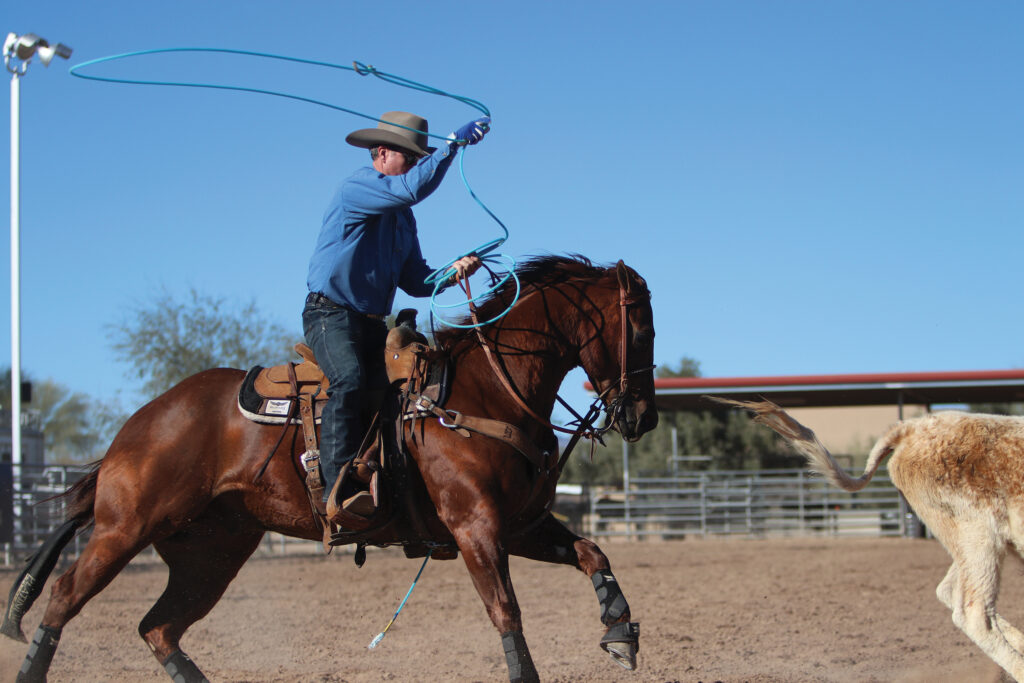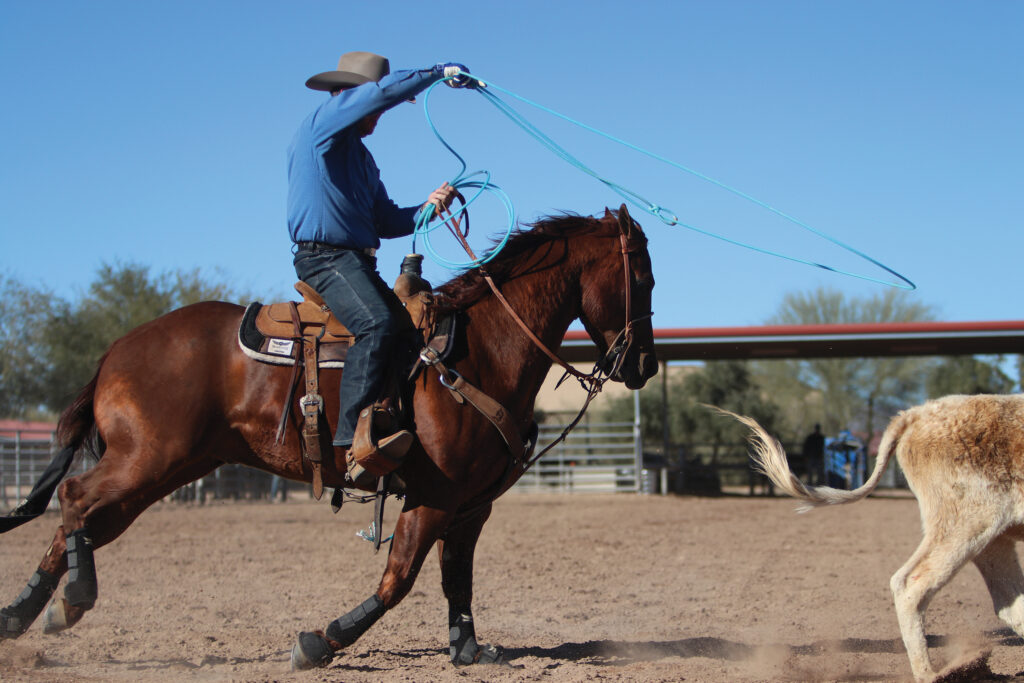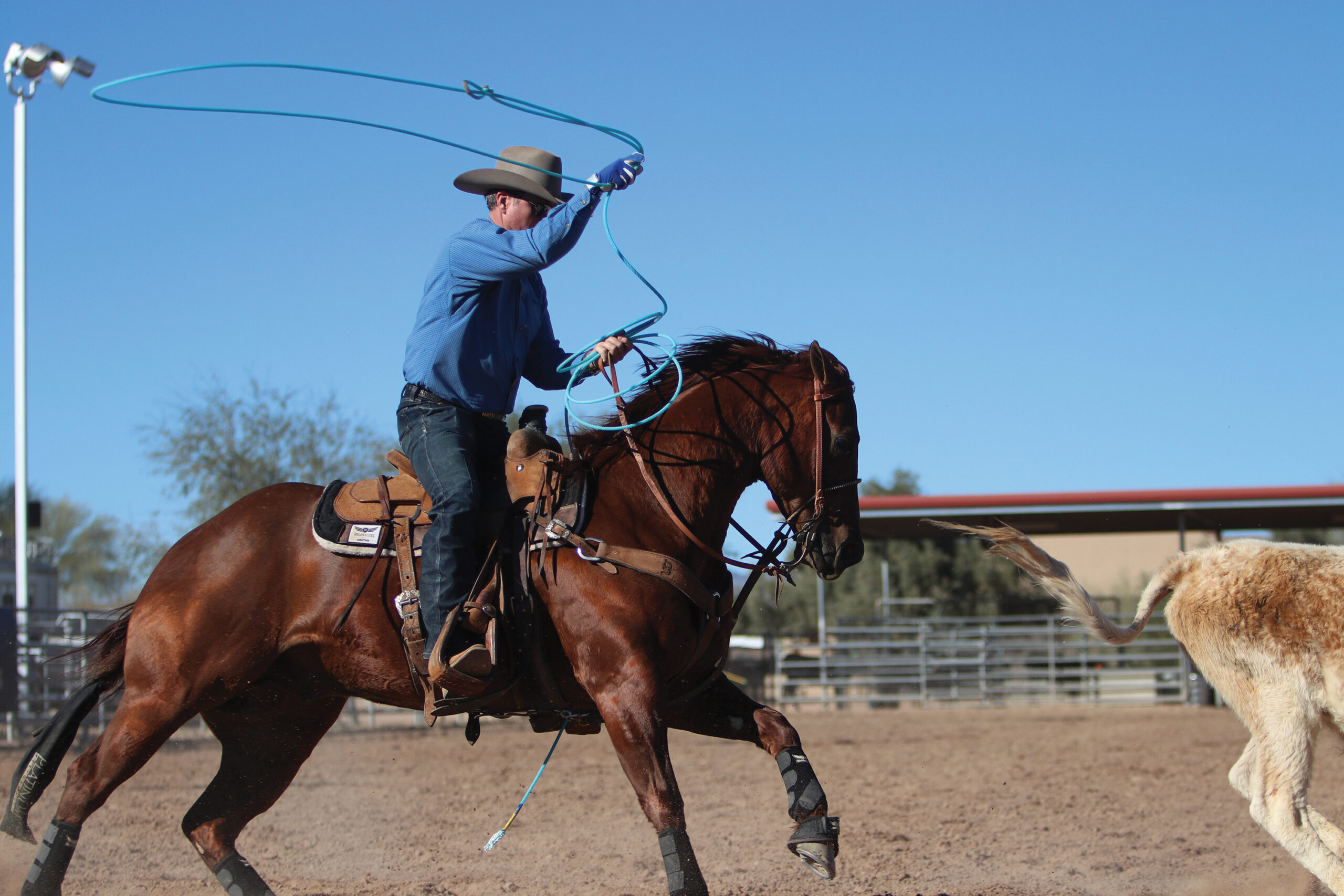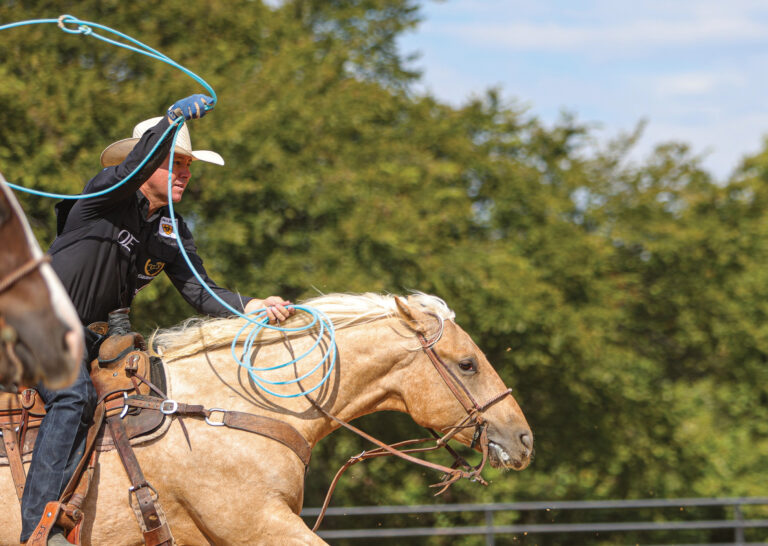Try this training approach for your heel horse to help him move his body better, react more quickly and pay attention.
I use not throwing my rope as a way to remind this horse—a 4-year-old who was started in the reining—to keep driving from the hind end and to keep his shoulders up in the front end.
Why?

This horse doesn’t get strong at all, but I want him to be always ready to feel the up instead of flat as we’re coming into a stop. I stop him and don’t throw if I feel his stride wanting to lengthen out. When I would normally throw, I will just swing through it and pick him up and get him on his butt. I will make him keep his stride tight and not let him get long and flat. A long and flat stride makes the back of your saddle pop up. I want my horse to be ready to take a jerk, so when I throw my rope, I want my saddle horn to rise up. I don’t want it flat and level, because then the horse will learn to get stiff in his front end and start hitting on the front end. It’s just not helpful in the timing of their run.
[READ MORE: Going Through the Paces: The Process of Developing Your Futurity Prospect]
How?

Left Hand
Because this horse came from a reining backround, and reiners generally give so many extra cues, I want him to be more between the bridle reins like a joystick. I want quicker reactions, so I want him to be used to my signals going across the arena instead of me giving all of these subtle cues. I want heel horses to be ready for battle. I want them to know the rate cue in the middle of the run even if that’s the first cue they feel. My ultimate goal is to make them user-friendly so that anybody can ride them, and they have to get through that stage of over-sensitivity to cues before that’s possible.
Legs
I’ll squeeze them into the bridle with my legs so they don’t get hollowed out through their back. That squeeze pushes the rib cage and the shoulders up, and it encourages him to drive from behind.
[READ MORE: Your Target & Position Has to Match Your Roping Style]
Resistance?

Usually, I don’t get a lot of resistance because it wakes the horse up and keeps him on higher alert to where he’s thinking about where my hand is and what I’m asking of him instead of me just delivering the rope. It’s almost like he’s caught with his hand in the cookie jar, and he knows to pay attention when I don’t throw. TRJ
Want more? Trevor Brazile has hours of instruction on Roping.com.











